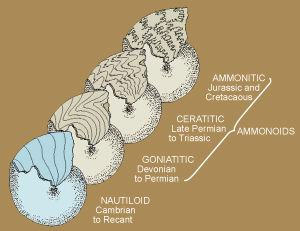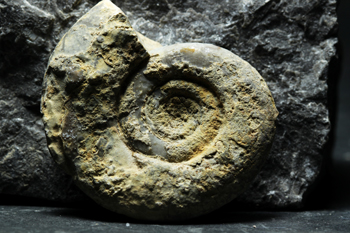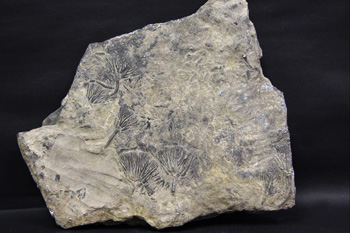|
|
 Mesozoic 251 - 65 million years ago Mesozoic 251 - 65 million years ago |
|
Aquatic Life
The re-establishment of marine and freshwater invertebrates in the Mesozoic was relatively slow. Brachiopods never achieved their dominance they held in the Paleozoic, and may have suffered competitively from the radiation of the more adaptive molluscan clams, snails and ammonoids in the Mesozoic. Mesozoic waters also were occupied by new aquatic reptiles, some of them large predators such as the now extinct long-necked plesiosaur and dolphin-like ichthyosaurs.
Mollusca - Bivalvi
Burrowing was a boom for bivalves, an adaptation that kept them out of harm with large swimming predators. Therefore infaunal and epifaunal forms increased in diversity throughout the Mesozoic. Heterodonta and Pteriomorphia are the two ecologically most important subclasses:
|
| |
| Heterodonta
Heterodonta are burrowers that feed primarily on suspended material. |
|
|
|
| Pteriomorphia
Most Pteriomorphia are bottom-dwellers on hard substrates, but the bivalve genera Claraia, Halobia and Monotis, important Triassic index fossils, were planktonic and may have achieved widespread distribution by being attached to floating seaweed |
|
|
|
| Mollusca - Cephalopoda
Ammonoids evolved from a single lineage that survived the Permian extinction into a diverse group with ceratitic suture lines of rounded saddles and denticulate lobes, so diverse that the Triassic could easily be called the "Age of Ceratites". Other forms with more complex ornate ammonitic suture patterns appeared for the first time.

|
|

Ophiceras
Mollusca, Cephalopoda, Ammonidea, Ceratitida
Lower Triassic, Guangxi, China
Size: 4.5x4cm
|
|
| Crinoidea
Only one crinoid lineage survived during the Permian extinction, which gave rise to the subclass Articulata characterized by rounded, closely fitting armor plates and mobile flexible arms. Throughout the Mesozoic era, this lineage had begun to diversify and is the only crinoid subclass that still exists today. Traumatocrinus from Guizhou in China are up to 1m tall crinoid species that may represent some of the first articulate crinoids. |
|

Traumatocrinus
Echinodermata, Crinoidea, Articulata
Middle Triassic, Guizhou, China
Size: 25x23cm
|
|
|
|













